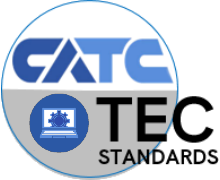BPS CTE Technology and Engineering Standards Book
Sorry, this activity is currently hidden
Completion requirements
Grade Levels
HS (Grades 9-12)
TEC-HS.1 Standard 1 - Nature and Characteristics of Technology and Engineering
- TEC-HS.1.01 Explain how the world around them guides technological development and engineering design.
- TEC-HS.1.02 Assess how similarities and differences among scientific, mathematical, engineering, and technological knowledge and skills contributed to the design of a product or system.
- TEC-HS.1.03 Analyze the rate of technological development and predict future diffusion and adoption of new technologies.
- TEC-HS.1.04 Conduct research to inform intentional inventions and innovations that address specific needs and wants.
- TEC-HS.1.05 Develop a plan that incorporates knowledge from science, mathematics, and other disciplines to design or improve a technological product of system.
TEC-HS.2 Standard 2 - Core Concepts of Technology and Engineering
- TEC-HS.2.01 Demonstrate the use of conceptual, graphical, virtual, mathematical, and physical modeling to identify conflicting considerations before the entire system is developed and to aid in design decision making.
- TEC-HS.2.02 Diagnose a flawed system embedded within a larger technological, social, or environmental system.
- TEC-HS.2.03 Analyze the stability of a technological system and how it is influenced by all the components in the system, especially those in the feedback loop.
- TEC-HS.2.04 Select resources that involve tradeoffs between competing values, such as availability, cost, desirability, and waste, while solving problems.
- TEC-HS.2.05 Cite examples of the criteria and constraints of a product or system and how they affect final design.
- TEC-HS.2.06 Implement quality control as a planned process to ensure that a product, service, or system meets established criteria.
- TEC-HS.2.07 Use management processes in planning, organizing, and controlling work.
TEC-HS.3 Standard 3 - Integration of Knowledge, Technologies, and Practices
- TEC-HS.3.01 Analyze how technology transfer occurs when a user applies an existing innovation developed for one function to a different purpose.
- TEC-HS.3.02 Evaluate how technology enhances opportunities for new products and services through globalization.
- TEC-HS.3.03 Connect technological progress to the advancement of other areas of knowledge, and vice versa.
TEC-HS.4 Standard 4 - Impact of Technology
- TEC-HS.4.01 Evaluate ways that technology can impact individuals, society, and the environment.
- TEC-HS.4.02 Critique whether existing and proposed technologies use resources sustainably.
- TEC-HS.4.03 Assess a technology that minimizes resource use and resulting waste to achieve a goal.
- TEC-HS.4.04 Develop a solution to a technological problem that has the least negative environmental and social impact.
- TEC-HS.4.05 Evaluate how technologies alter human health and capabilities.
TEC-HS.5 Standard 5 - Influence of Society on Technological Development
- TEC-HS.5.01 Evaluate a technological innovation that arose from a specific society’s unique need or want.
- TEC-HS.5.02 Evaluate a technological innovation that was met with societal resistance, impacting its development.
- TEC-HS.5.03 Design an appropriate technology for use in a different culture.
TEC-HS.6 Standard 6 - History of Technology
- TEC-HS.6.01 Relate how technological development has been evolutionary, often the result of a series of refinements to basic inventions or technological knowledge.
- TEC-HS.6.02 Verify that the evolution of civilization has been directly affected by, and has in turn affected, the development and use of tools, materials, and processes.
- TEC-HS.6.03 Evaluate how technology has been a powerful force in reshaping social, cultural, political, and economic landscapes throughout history.
- TEC-HS.6.04 Analyze how the Industrial Revolution resulted in the development of mass production, sophisticated transportation, and communication systems, advanced construction practices, and improved education and leisure time.
- TEC-HS.6.05 Investigate the widespread changes that have resulted from the Information Age, which has placed emphasis on the processing and exchange of information.
TEC-HS.7 Standard 7 - Design in Technology and Engineering Education
- TEC-HS.7.01 Determine the best approach by evaluating the purpose of the design.
- TEC-HS.7.02 Document trade-offs in the technology and engineering design process to produce the optimal design.
- TEC-HS.7.03 Optimize a design by addressing desired qualities within criteria and constraints.
- TEC-HS.7.04 Apply principles of human-centered design.
- TEC-HS.7.05 Illustrate principles, elements, and factors of design.
- TEC-HS.7.06 Implement the best possible solution to a design.
- TEC-HS.7.07 Apply a broad range of design skills to their design process.
- TEC-HS.7.08 Apply a broad range of making skills to their design process.
TEC-HS.8 Standard 8 - Applying, Maintaining, and Assessing Technological Products and Systems
- TEC-HS.8.01 Use various approaches to communicate processes and procedures for using, maintaining, and assessing technological products and systems.
- TEC-HS.8.02 Develop a device or system for the marketplace.
- TEC-HS.8.03 Apply appropriate methods to diagnose, adjust, and repair systems to ensure precise, safe, and proper functionality.
- TEC-HS.8.04 Synthesize data and analyze trends to make decisions about technological products, systems, or processes.
- TEC-HS.8.05 Interpret the results of technology assessment to guide policy development.

